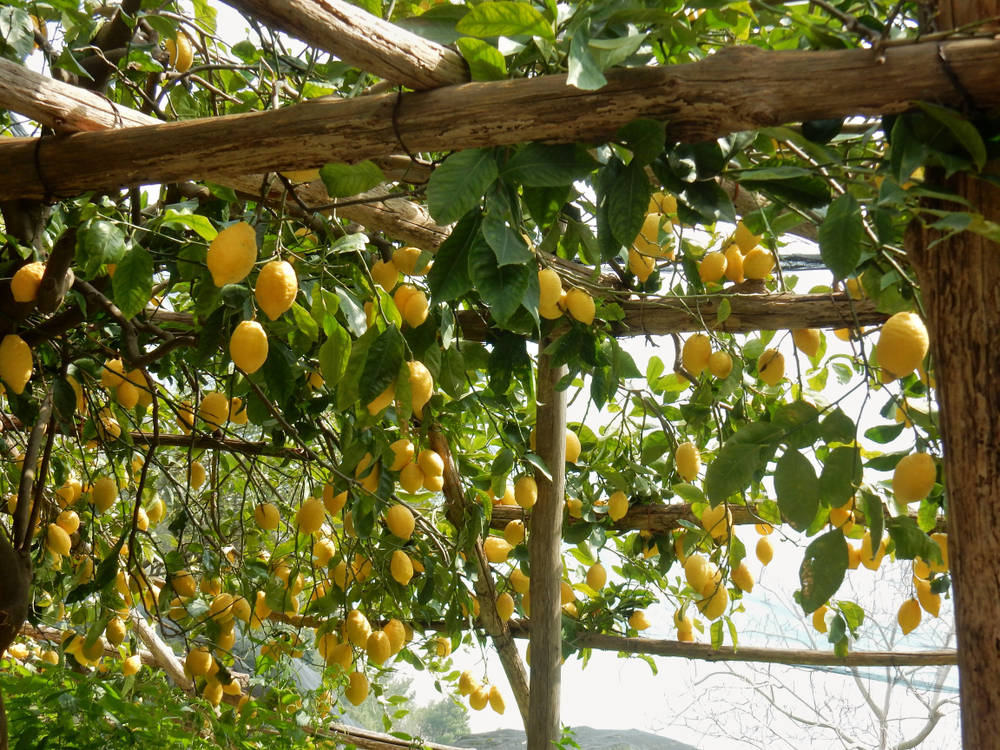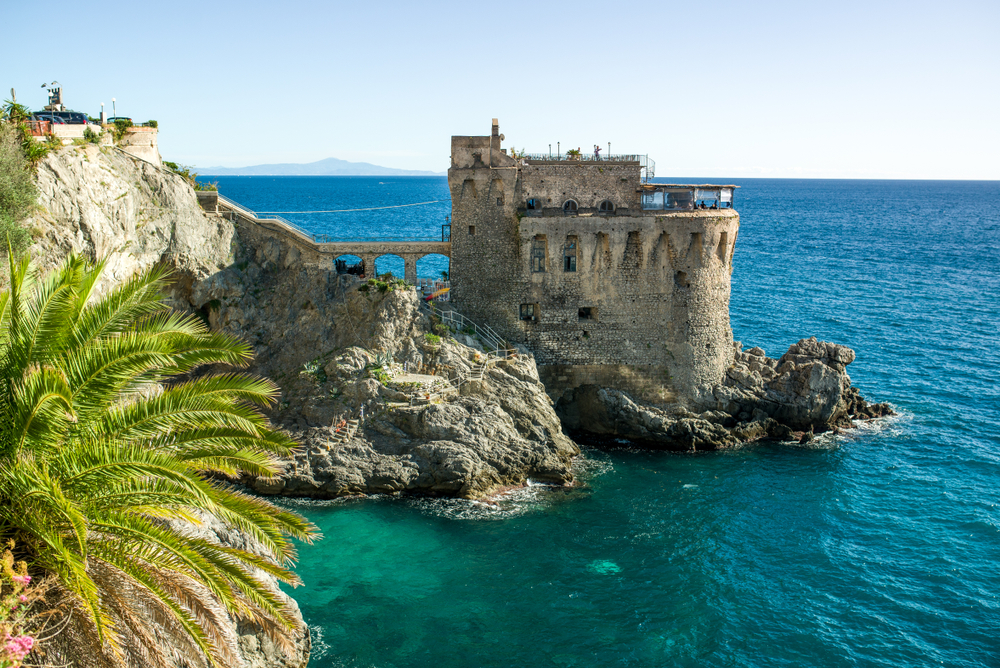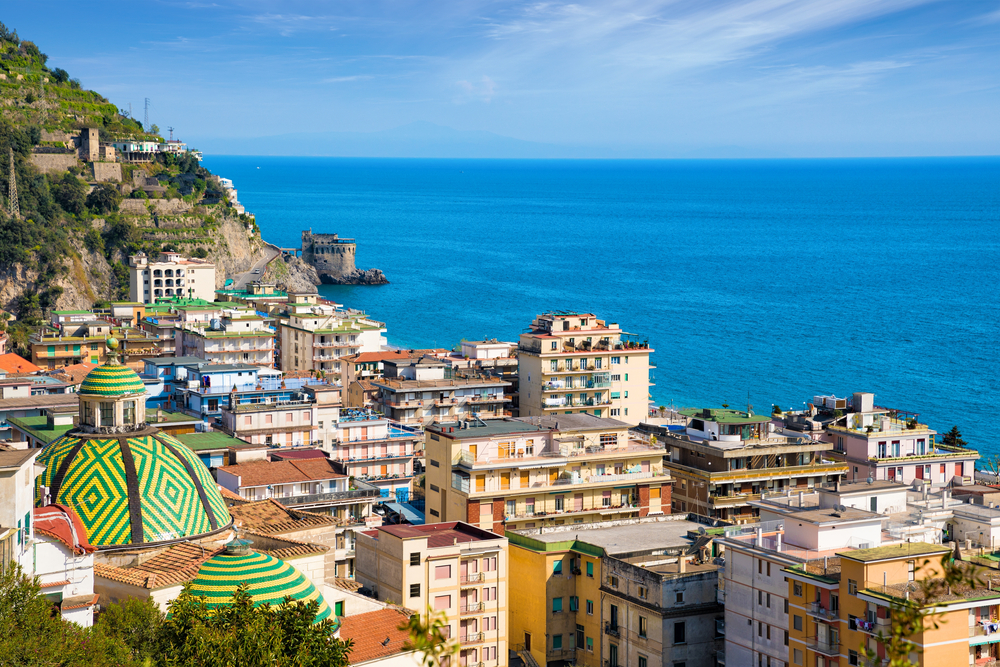Location Information
Minori
Minori
Minori is one of the pearls of the Amalfi Coast, maybe the brightest. It was once a small fishing village, but then, in the twentieth century, tourism and considerable urbanization have made it one of the pearls of the Amalfi Coast, a UNESCO World Heritage Site since 1997.
In Roman times, it was nicknamed Rheginna Minor, to differentiate it from Rheginna Maior, today’s Maiori. Today the two places are closely linked but distinctive in their own right.
Since ancient times, Minori was considered one of the favorite destinations of the Roman aristocracy in the imperial age, as has been noted by historians, thanks to the discovery of a patrician villa of the time.
Once the town of Minori was rich in mills, of this tradition today remains the strong vocation for the production of pasta, used in various Salerno recipes and proposed in the menus of the small and characteristic restaurants of Minori.
Here, it is customary, during the celebrations of the patron Saint Trofimena, to prepare “ndunderi”, a type of fresh pasta similar to gnocchi, a recipe that seems to date back to the era of ancient Rome.
Today, it has been adapted by the chefs of the Minori restaurants, with fresh cow ricotta instead of rennet, seasoned with tomato sauce and pork rinds, chops and sausage.
Attractions in Minori
Roman Maritime Villa
Roman Maritime Villa dates back to the 1st century. A.D. and represents a precious example of an ancient Roman seaside villa, as well as one of the most important historical monuments of the Amalfi Coast. The various finds and artifacts are kept in the Antiquarium museum. This archaeological site only emerged in 1932, after a collapse following some building renovations in Minori. An incredible place that resurfaced, piece by piece also in 1954, after the strong flood, until today that it has become a renovated museum center, in second place among the most visited museums in the Province of Salerno in 2019.
Basilica of Santa Trofimena
The Basilica of Santa Trofimena is the main example of 18th century sacred architecture located in the heart of Minori, on the Amalfi Coast.
The importance of the Church is due to the presence of the relics of Saint Trofimena, whose bones were found on the beach, as tradition dictates, between the seventh and eighth centuries and deposited in a small temple not far from the beach. In 987 Minori became a bishopric and a cathedral was erected in the center of the urban area.
The subsequent architectural deterioration convinced the population to completely demolish the church, which was then completely rebuilt.
The heart of the basilica is made up of the Crypt, a real jewel of 18th-century sacred architecture, which is accessed by two staircases that start from the balustrade of the presbytery.
Path of Lemons
The Path of the Lemons was the only connection between Minori and Maiori, as an alternative to the sea, before the construction of the Amalfi state road. It is considered one of the most beautiful paths in Italy.
The path crosses one of the most important realities of the cultivation of the Amalfi sfusato, a typical lemon famous in the world for its size, aroma, flavor and high content of vitamin C. Centuries of peasants’ work have shaped this unique and delicate landscape, giving it its historical and naturalistic charm.
It is a rather easy walk, also suitable for the inexperienced and children, which runs along one of the most spectacular stretches of the coast. The length of the trail is 3 km, and the duration of the route is about 2 hours.
Include this location among many others in your very own tailor-made itinerary with Classic Amalfi Coast. Inquire with us for your free personalized vacation quote.
Gallery




